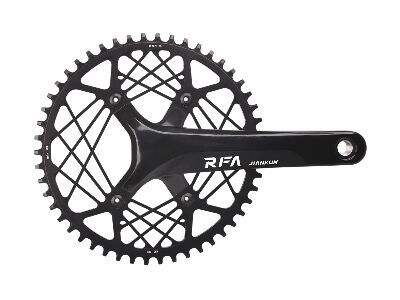The right crankset can make a world of difference when it comes to high-performance cycling. The question of carbon or alloy crankset is a popular one amongst cyclists. Jiankun is dedicated in developing and producing high-end crankset for performance cyclists. In this article, we will dive into the nuances of carbon vs. alloy crankset what is being given up and what’s being gained, and how to decide which one will suit you best for your performance goals.
Carbon vs. Alloy Crankset
Carbon crankset are celebrated for their lightness and stiffness, allowing a bike to start, and climb, quicker. GRAVEL CRANKSET on the other hand usually made from aluminum, are heavier than their carbon counterparts, but they will be a bit more durable and cost less. The decision between carbon and alloy is usually a matter of a cyclist’s needs and budget.
The Compromises of Carbon and Alloy Crankset
When it comes to alloy vs carbon crankset you need to know where the compromises are. It may help your bike feel faster and a bit easier to control but if you crash, it might also make it more likely that part of the frame will break. Alloy crankset won’t get you up to speed as quickly, but they can stand up to abuse and will last longer, particularly in harsh conditions.
Your choice of Carbon vs Alloy Cranks
Whether you go for a carbon or anROAD CRANKSET will be determined by the kind of riding you do. If most of the riding and racing you do is on smooth road, a carbon crankset could be the ideal option for you, thanks to its weight and stiffness benefits. But if you’re riding mountain where you may have more crashes, an alloy crankset might be preferable because it’s more durable and cheaper to replace.
Which Crankset Material Reigns Supreme
There is no decisive winner of MTB CRANKSET a rider you are. The solution to these queries will guide you in determining which type of material is right for you and your cycling routine.
Getting the Most Out of Carbon or Alloy Crankset
Whether it is a new or old model, there are steps to maximizing both. Ensure that your bike is race-ready, and think about other components that could boost performance, such as the wheels and tires. Just remember, not only the gear makes a good cyclist, also his training, technique and dedication.

